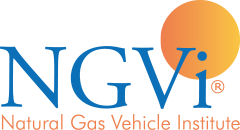Confused about these CNG fuel system inspection requirements?
We understand that your fleet needs to keep moving, but not at the expense of safety. We also know that some regulations may seem confusing when it comes to the proper inspection and maintenance of your CNG fuel systems. Here are the ones we get the most questions about, and our recommendations on how to address them properly.
Inspection Intervals
According to the Federal Motor Vehicle Safety Standard (FMVSS) 304, CNG fuel systems should be inspected every 3 years or 36,000 miles. But because heavy-duty CNG fleet vehicles may reach this kind of mileage in a month or two, some manufacturers provide for a more practical approach and allow annual CNG fuel system inspections. Although we recognize it’s not always feasible, we encourage our clients to follow FMVSS 304 whenever possible to mitigate risk in the event of litigation, and until the federal requirements change.
Complete Cylinder Inspections
In order to complete a full visual inspection of a CNG fuel system, an inspector must have a 360-degree view of each cylinder. The easiest way to accomplish this is to remove the required shields. But not all cylinders are mounted the same, limiting how quickly and effectively an inspection can be performed. Back-of cab installations, for instance, often have shield cabinets that can take upwards of an hour and a half to remove.
Some fuel system manufacturers offer built-in inspection panels to facilitate the 360-degree inspection requirement, but even with this feature, a GoPro camera is necessary. These may allow your team to adequately assess the condition of your cylinders and identify potential damage without having to remove shields in the process.
Assessing Shield Damage
Whenever a cylinder shield shows signs of damage, you must take that vehicle out of service and immediately perform a detailed visual inspection. This is because shield damage may indicate cylinder damage beneath the shields, and undetected cylinder damage is a huge liability since it is the number one cause of cylinder failure.
If you have more questions or concerns about the requirements and best practices regarding your CNG fuel system inspections and maintenance, we want to know! Contact us today, or take a look at some of the courses we offer to support these safety efforts.
